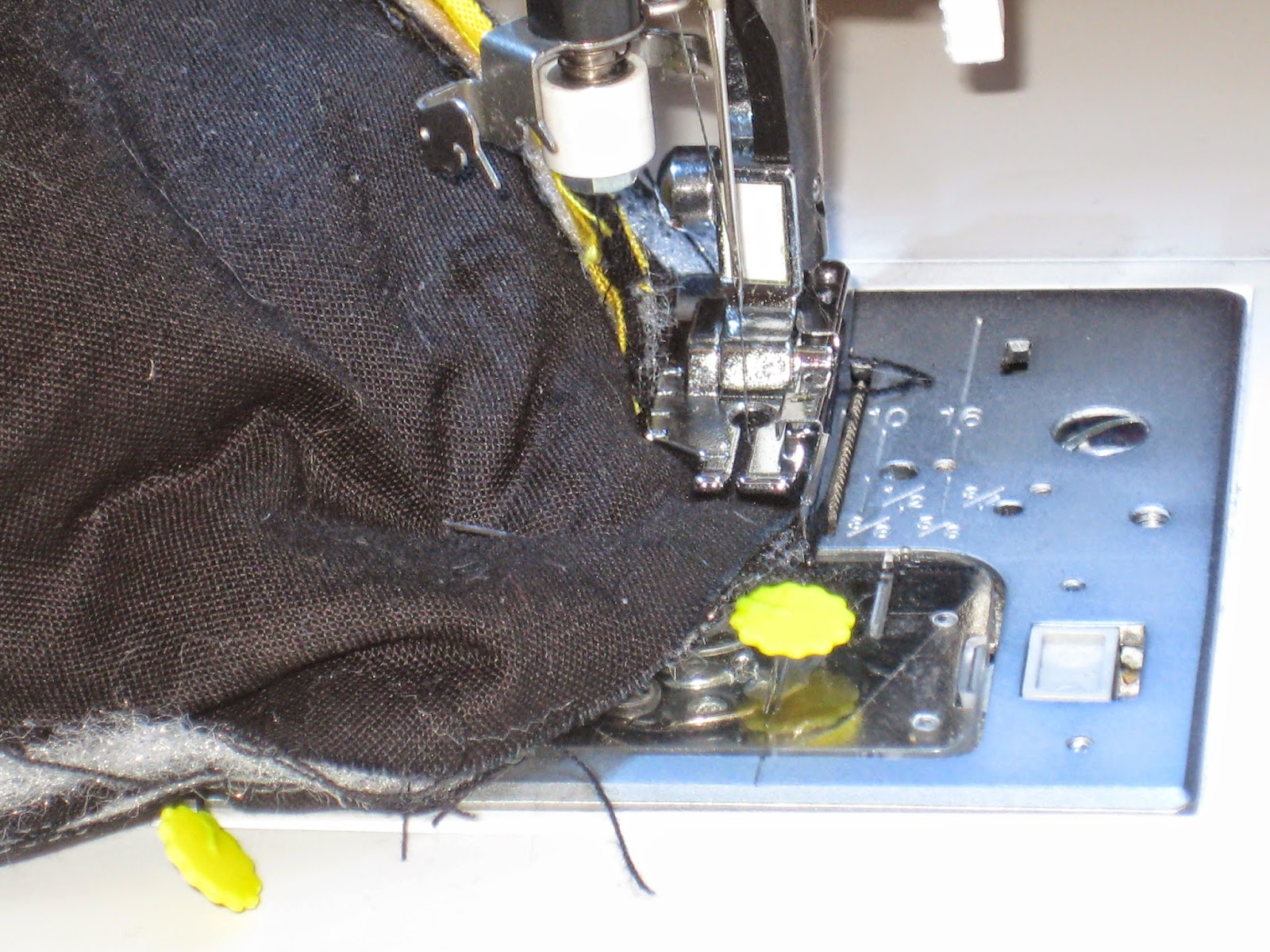I decided to name this quilt, Hidden Path to the Wild Side, because on one side, I used the pattern for Hidden Wells ( Hidden Wells Tutorial ), which is how I got the "Hidden" part of the name. I also used a wedge template to get a curving "Path". Finally, I used cheetah print fabric in the quilt. Thus the "wild".
Here is the Hidden Wells Pattern. Once I took a photo of the other side, the dogs ran over and I couldn't get them out of the shot, so I gave up.
This is a close up of one of the corners and it shows the fabric better. On the Hidden Wells side, I quilted in the ditch. Then on the curving side, in the middle, I followed the curves echoing the seems. On the edges, the above image, I quilted in the ditch down the straight part of the the wedge section.
This is one of my patches. This is how I covered up some of my mistakes. I tried taking the quilting out three times as I repeated to make mistakes almost in the same spots. I couldn't eliminate the wrinkle and puckering, so I decided to hide the mistakes instead of ripping the thread out until I got it right. I might never have gotten this quilt finished with that method.
This is a close up of one of the corners and it shows the fabric better. On the Hidden Wells side, I quilted in the ditch. Then on the curving side, in the middle, I followed the curves echoing the seems. On the edges, the above image, I quilted in the ditch down the straight part of the the wedge section.
This is one of my patches. This is how I covered up some of my mistakes. I tried taking the quilting out three times as I repeated to make mistakes almost in the same spots. I couldn't eliminate the wrinkle and puckering, so I decided to hide the mistakes instead of ripping the thread out until I got it right. I might never have gotten this quilt finished with that method.


















































